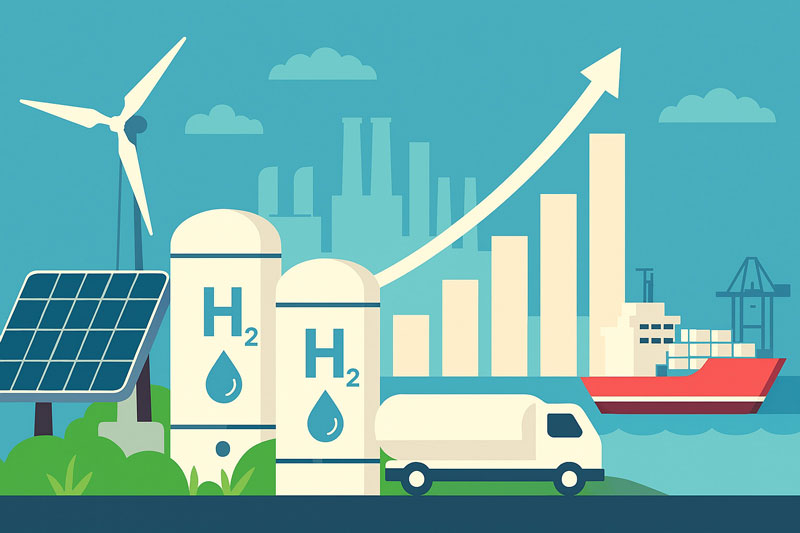Globally, hydrogen demand could triple by 2060, with India’s share in final energy consumption expected to rise from 1.8 per cent to over 3 per cent, according to S&P Global’s Renaissance scenario.
India is fast-tracking its hydrogen economy through competitive pricing, certification reforms, and port infrastructure upgrades, according to S&P Global Commodity Insights experts actively mapping the country’s role in the clean energy transition.
Backed by the $2.4 billion National Green Hydrogen Mission, India aims to produce 5 million metric tons (MMT) annually by 2030, with more than half targeted for export.
“India’s emergence as a pivotal player in the global hydrogen economy is deeply intertwined with its broader energy and commodity market evolution,” said Pulkit Agarwal, Head of India Content, S&P Global Commodity Insights.
Agarwal and other experts from S&P Global Commodity Insights—a division of S&P Global—shared these insights on the inaugural day of the World Hydrogen India Summit held in New Delhi on Thursday. The summit highlighted hydrogen’s disruptive potential across city gas, refineries, fertilisers, and renewables. However, pricing remains a key challenge, requiring sustained policy support and robust market mechanisms.
Globally, hydrogen demand could triple by 2060, with India’s share in final energy demand projected to rise from 1.8 per cent to over 3 per cent, according to S&P’s Renaissance scenario. “Nearly 80 per cent of India’s future hydrogen production could come from green sources,” noted Abhay Singh, Senior Analyst.
India’s cost competitiveness is also drawing attention. “India and China are emerging as the lowest-cost supply regions for electrolytic ammonia,” said Gauri Jauhar, Executive Director, Energy Transitions & CleanTech Consulting. The country’s Green Hydrogen Certification Scheme mandates that funded projects emit no more than 2 kg of carbon dioxide equivalent (CO₂e) per kilogram of hydrogen produced, bringing India in line with global benchmarks.
Shipping is another frontier. “India is prioritising hydrogen and ammonia as marine fuels, with green ammonia bunkering planned at all major ports by 2035,” said Rahul Kapoor, Head of Shipping Analytical Research.
Recent tenders have revealed promising price points: hydrogen below $4 per kg and renewable ammonia near $600 per metric tonne (MT). “Binding offtake agreements with refineries and fertiliser producers signal strong initial demand,” said Vipul Garg, Senior Pricing Reporter.
The experts agree that with expanding interest from steel, transport, and other hard-to-abate sectors, India’s hydrogen economy is poised to scale rapidly, driven by policy clarity, infrastructure upgrades, and global collaboration.


